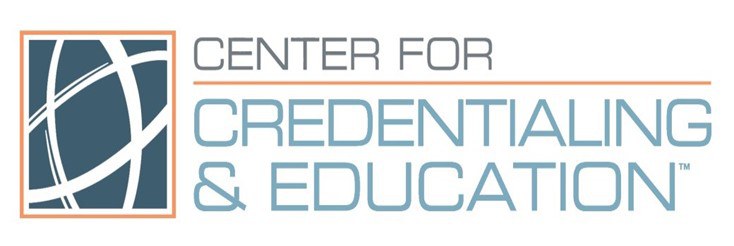
By: Michelle Mica Aragon
Sometimes I joke with my clients when introducing the idea of cognitive restructuring – “Let’s do some brainwashing.” This phrase tends to evoke images of black and white horror flicks with old men in lab coats coming at their victim with a spinning target. Less frightening, yet still a common image, is of the gullible volunteer being seduced into performing outlandish acts (chicken dance, anyone?) after staring at a swaying clock on a chain – “You are becoming very sleepy, very, very sleepy…..”
Although the term cognitive restructuring sounds a bit like plastic surgery for the brain, the concept is actually based in honest self-reflection, self-care, and gentle user-driven change. The client is totally in charge of composing their own process. This is why I personally love this method and find it to be powerful and successful in increasing more peace and less internal stress. Who wouldn’t want more peace and less stress?
I think it’s helpful to understand the definition and origins of this concept. In the 1950s, there was a movement in the psychotherapy world towards a more, shall we say, assertive form of counseling. In the late 1940s-early 50s, Carl Rogers developed what is considered the foundation of almost all counseling approaches. He believed that if a therapist provided unconditional positive regard, genuineness, and empathy then the client would be able to heal mostly on their own. Albert Ellis did not completely disregard these core conditions, but shifted to a more active and immediate modality for client healing. He developed REBT, Rational Emotive Behavioral Therapy with the goal of challenging clients to test the logic or rationale of their beliefs, attitudes and thoughts. Ellis believed that it was people’s beliefs and thoughts about events that caused emotional distress, not the events themselves. Brilliant!
Aaron Beck picked up where Ellis left off creating Cognitive Behavioral Therapy (CBT) which is also known as just Cognitive Therapy. Beck too, believed that by changing the way we believe and think, we can change how we feel, i.e., cognitive restructuring. The implication here, and a very important one, I think, is that the power to feel better and to reduce internal stress is in OUR OWN HANDS AND MINDS. While it is, of course, useful to have someone educated in this method teach us how to use it, in the end it is the individual who is affecting their own change, in charge of their own happiness or misery. Easy peasy, right?
Uh, well, as it turns a lot of us humans become so accustomed to feeling lousy that when we embark on changing our state of mind, we resist. For some reason, it seems far more palatable to believe that the world, Universe, people, etc., are the cause of our suffering, our headaches, our lack of time, our anger, our sadness, our lack of: fill in the blank. When asked to question our core beliefs, we initially hold steadfast defending them as the Truth with no possible room for additional points of view. I offer an example of what the cognitive behavioral coaching process looks like, based on conversations I’ve had over the years with friends and clients, to illustrate my point:
Client: “I have no time for myself. Everyone expects, even demands so much from me. I feel like I never do enough to get them off my back. I feel constant stress and even resentment for what they put me through.”
What do you hear when you read these words? I hear blaming others for her choices. I hear a feeling of being trapped with no choices. I hear anger. The question when using cognitive restructuring, is to first explore what is really true and what is merely perceived to be true. The next step is to go down even deeper to find out what is the core, or foundational belief from which these thoughts and feelings spring forth. First, let’s see how checking for truth goes:
Coach: “Which people expect things from you, and what do they say when they demand these tasks?”
Client: “Well, there’s my daughter, my husband, my boss, my best friend, and I guess, my mom. My daughter, well, she obviously needs me to do, you know, parenting. My husband wants me to relax and do fun stuff with him, but who has time? God, that’s so annoying. I guess he has time, but well good for him. My boss is actually really cool, I guess I drive myself more than she drives me. She actually complements me a lot and seems happy with my work but, I don’t know, I can do better.”
Coach: “I see. Tell me more.”
Client: “Let’s see, Lisa, my friend, well she’s always going through something you know? I’m the ‘strong’ one so I have to be there for her. She has no one else. Sometimes I can lean on her but less and less often. I think she needs help. Let’s see, who else? Oh, my mom. I don’t know, she seems like, well, I can never do enough to earn her pride. She reacts the same no matter what I achieve. I know she loves me but I don’t think she is proud of me.”
Coach: “You’ve several examples of what you believe are your sources of stress. I wonder if we can explore maybe one today that is the most stress-causing for you.”
Client: “If I rank them, it would be my husband and best friend, although my mom is a doozy also!”
Coach: “Shall we start with your husband then? (Client indicates yes). What does your husband actually say when he is making what you think are unreasonable demands of you?”
Client: “He doesn’t have to say it. He looks at me as I run around the house, making lists, freaking out because there’s too much to do and not enough time. He sits there watching TV or working on his projects after work and l think he thinks I’m crazy. Sometimes, he will say, ‘why don’t you sit down now, and relax honey?’ That really ticks me off!
Coach: “It really angers you! What about that specifically makes you mad?”
Client: “Because that’s like saying, ‘look at me, I’m totally lazy. Why don’t you be like me?”
Coach: “Do you think he believes that?”
Client: “(laughs) No, actually.”
Coach: “But you believe that.”
Client: “Um, no, he’s not lazy at all actually.”
We’re continuing to search for the truth versus what she perceives as truth.
Coach: “But you believe if you stopped and relaxed like he suggests, that that would mean you were lazy.”
Client: “Oh, geez, yeah, I guess so! Wow, why do I think I’m not allowed to relax for goodness sakes?!? But, if we don’t work hard to complete things, and do it with all we’ve got then what good are we?”
Coach: “This is the question. What is your belief about working, achieving, completing tasks?”
Client: “What do you mean?”
Coach: “If I work hard and relentlessly at home, at work, all the time I will achieve ................... If I don’t then...............will happen.
Client: “I will be a good person, daughter, wife, mother, employee if I do it right. If I don’t then no one will like me or accept me.”
Ah, here is deep, core, foundational belief that is causing her to interpret other’s behaviors in a distressing manner.
Coach: “I’m feeling a sense of deep anxiety and some sadness around this. Wow, such impossibly high standards just to be liked and accepted. Have you ever achieved this by working so hard?”
Client: “I never thought about it being impossible but I am 49 and have been this way always and never feel loved or accepted or ok. So, I guess it’s not working and in the mean time I am a nervous wreck!”
Coach: “Right! Is it possible that your belief is not serving you? Perhaps with a different belief, you could create some space for peace and self-acceptance and less stress!?”
Client: “I guess so. But what would be the alternative belief? It’s scary to think of letting go of what I think, I mean, I don’t want to just check out of society and be a nobody.”
Coach: “Sounds like some good homework would be to write down ideas for alternative beliefs. You don’t have to believe them yet, but just let some ideas come. If it helps, try to think of someone who thinks differently than you, perhaps your husband, and imagine what he might believe about work, etc.”
________________________________________________________________________________________
So we discovered that her husband doesn’t actually verbally demand anything in reality (her “truth” challenged). She perceives his suggestion to relax as some sort of affront to what she’s trying to do – work herself to death until she finally can feel accepted and loved. In cognitive restructuring this is called dichotomous thinking AKA black and white thinking. This cognitive distortion can grip us in a polarized way of perceiving where there is only total success or total failure and there is no room for an in-between. This client believes she MUST be perfect in all her work and endeavors or she will be an utter failure and will be rejected by all. Now that she is aware, she can start to release herself from this internal tug-of-war by exploring what the gray area would be. If she chooses to adhere to this all-or-nothing belief, she will likely continue to suffer. It seems an obvious choice, but it isn’t always easy to change one’s mind. It can be done, however, with amazing, soul-freeing, exuberant success with practiced self-awareness, non-judgmental self-observation, and trying on alternative beliefs for size. Of course, in the process, it doesn’t hurt to treat yourself like Carl Rogers would his own clients: with unconditional positive regard, genuineness, and empathy for your dear heart.
What belief can you change in order to achieve more well-being?
ILCT student Michelle Aragon is a Board Certified Life & Wellness Coach and Meditation Instructor with a MA in Counseling. Michelle runs a private practice where she helps her clients identify and create personalized plans for optimizing their well-being including healthy living, better life/work balance, and value + behavior alignment. Michelle’s areas of expertise include principles of Mindfulness-Based Stress Reduction, interpersonal communication, understanding the mind/body connection, and Cognitive Behavioral Coaching.




